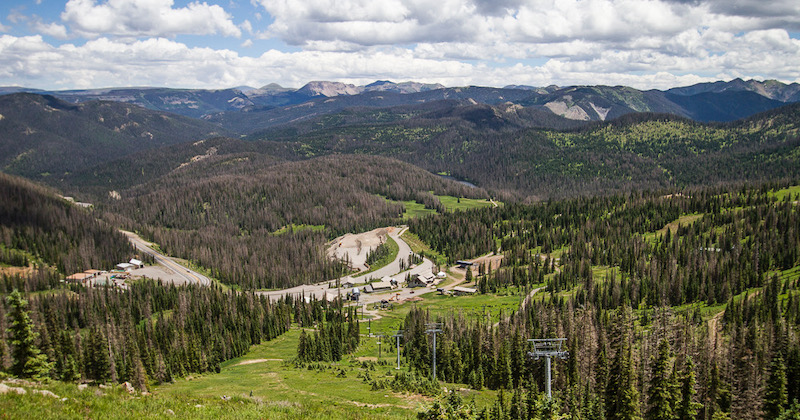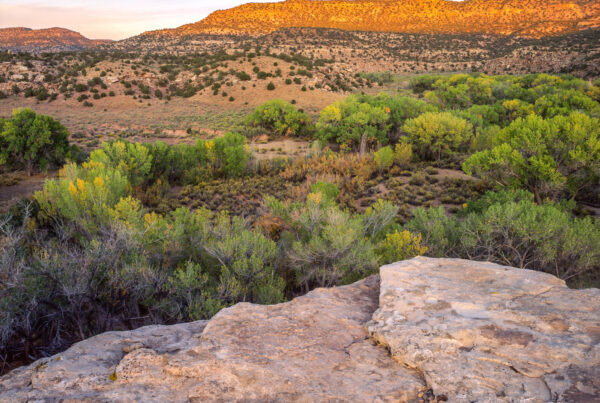Photo: Alex Pullen
OK, here we go again. Many of you joined us in submitting protests this last fall on the draft decision to provide road access to the Village. And for good reason. It’s not surprising they went ahead and finalized the decision. It follows a decades-long pattern of the Rio Grande National Forest siding with a for-profit developer, Red McCombs, over the public interest. Still, it’s incredibly disappointing.
As most of you who have been following this issue know, a federal court has deemed the Forest Service’s environmental analysis to be illegally inadequate. Their decision to approve a land exchange that would allow development of the Village was nullified by the court.
They are now using that same analysis to approve an alternative action, road access to allow for the long-sought Village at Wolf Creek to be developed. Providing a different avenue for development does not make the original analysis any better, it makes this decision just as flawed as the land exchange.
Needless to say, we aren’t throwing in the towel now. You can expect us and our partners to continue the fight this as we have for years and years. Many thanks to all of you for supporting this work for so many years.
Our joint Press Release with our partners is below.
FOR IMMEDIATE RELEASE: February 27, 2019
Rio Grande National Forest Again Sides with Developer in Wolf Creek Access Issue
The Rio Grande National Forest Supervisor, Dan Dallas, signed a Final Record of Decision that could result in an easement over our Federal Public Lands to facilitate construction of the massive “Village” at Wolf Creek. This decision circumvents a federal court ruling that invalidated prior approvals for this controversial real estate development. The “Village” at Wolf Creek, located atop Wolf Creek Pass, would house up to 10,000 people in as many as 2,000 housing units. The parcel, owned by Texas Billionaire Red McCombs, was first obtained under the guise of constructing a 208 unit development. The now vastly inflated development plan has resulted in decades of controversy, and courts have repeatedly stymied attempts by the developer to fast track approvals or short-circuit environmental studies and public input.
A Colorado federal district court set aside the Forest Service’s approval of a land exchange to facilitate the development in May 2017. “The Forest Service cannot abdicate its responsibility to protect the forest by making an attempt at an artful dodge,” the Court declared. Now, the Forest Service hopes to use the same artfully dodged analysis, previously deemed in violation of multiple federal laws, to approve a different means of providing the developers access.
Travis Stills, Attorney with Energy and Conservancy Law, who has represented the groups in several rounds of successful litigation, said, “This decision flagrantly violates federal laws and the developer’s own agreement to subject any access request to federal scrutiny. We are disappointed the Forest Service will not honor the binding settlement agreement and federal court orders. Should the Forest Service cave to pressure, we will take the steps necessary to protect the National Forest.”
Not only is the Forest Service pushing ahead in violation of legal decisions, it has cut out the public in its latest decision. The agency declared that only individuals or organizations that commented on this project in 2012 could participate in the 2018 process. This administrative restriction has chilled the decisionmaking process and left many concerned citizens voiceless.
Local advocates and conservationists are particularly concerned about the project’s massive impacts to one of Colorado’s last best places. “What part of creating a massive development in the middle of one of the last remaining core habitat areas in the Southern Rockies do the developers not understand?” said Christine Canaly, Director of the San Luis Valley Ecosystem Council, having participated in the public process since 2000. “What will it take for common sense to prevail in providing a lasting legacy to future generations of the public, over building a tombstone of housing units that enables ecological ruin at the Rio Grande headwaters?”
Conservation organizations who have battled this development for over a decade were not surprised that the Forest Service capitulated to the continued demands of a well-connected developer. “We anticipated backroom pressure to bend to the billionaire’s demands, hence over 2,300 people recently contacted Rio Grande National Forest Supervisor Dan Dallas encouraging him to stand up for the public interest,” said Tehri Parker, Executive Director of Rocky Mountain Wild. “We are disappointed he chose the wishes of a Texas developer over local forest protection advocates.”
“Once again, it falls to the public to demand protection of Wolf Creek Pass, a place long cherished by generations of visitors and residents alike,” said Jimbo Buickerood, Lands Program Manager at San Juan Citizens Alliance. “Though the Forest Service might be inclined to renege on its stewardship responsibilities, we are ready to insist on compliance with the law and the public’s will.”




